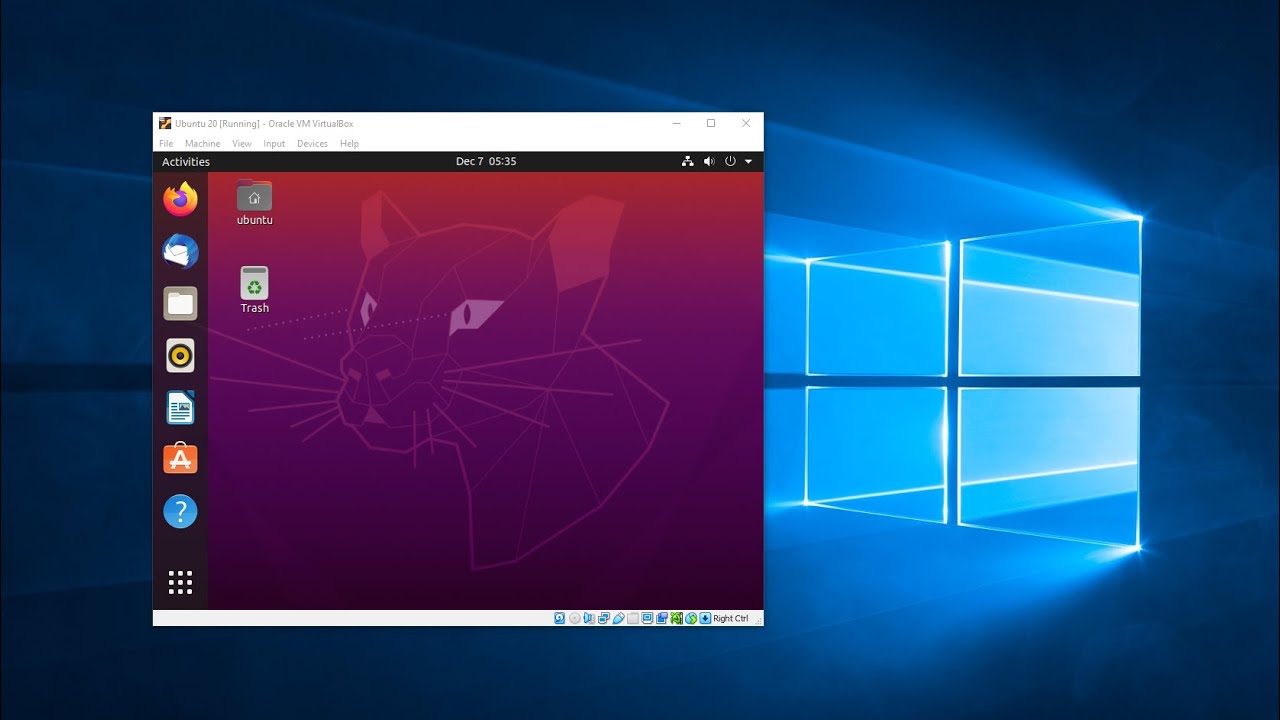

- #How to use virtualbox on linux install#
- #How to use virtualbox on linux manual#
- #How to use virtualbox on linux windows 10#
- #How to use virtualbox on linux iso#
Go with Other Linux if your distribution isn’t listed. Give the VM a name, choose Linux from the Type dropdown, and select the Linux version as indicated. Open VirtualBox, click New, and use the following steps as a guide:

Now that you have VirtualBox installed and Linux downloaded, it’s time to get your guest OS set up.
#How to use virtualbox on linux iso#
You should end up with an ISO file in your Downloads folder.

Once you find the version you want to try, download the installation file. You can start with this article for help defining your specific needs and refer to this one for a quick rundown of some popular options. There are a vast number of distributions that you can choose from. Next, you’ll need to track down a version of Linux that suits your needs.
#How to use virtualbox on linux install#
This is the software that powers the entire virtualization process, so go ahead and download it here if you haven’t already and then install it. VirtualBox is a free program provided by Oracle. Although there are ways to resolve issues later (such as increasing a virtual disk’s space limit), it’s much easier to make the right decision from the get-go. Depending on your use of the VM, you should be able to decide pretty easily if you can predict the physical storage space needed. The difference is pretty straightforward: a fixed-size drive carves out a specific amount of storage space for the guest OS, while a dynamically allocated drive will expand the space as needed. Simple, right? Also, now is a good time to take a moment and decide whether you will create a fixed size or dynamically allocated virtual hard drive for your VM. When it comes to virtualization, the operating system you already have is the host OS. The Basicsīefore we really get going, there’s an important distinction to make about terminology. Best of all, it takes just a few minutes to do. Whether you want to learn bash scripting, try out a new program, or test hardware compatibility, running a Linux virtual machine (VM) will get you there. And now, it’s easier than ever to do it without wiping out your existing setup. Please contact the moderators of this subreddit if you have any questions or concerns.There’s something refreshing about installing a new operating system onto a computer. I am a bot, and this action was performed automatically. Thanks for taking the time to help us help you! Also, PLEASE remember to change the flair of your post to Solved after you have been helped! Your post has not been deleted - do not re-submit it. If you have met these requirements, you can ignore this comment. If this is your first time creating a virtual machine, we have a guide on our wiki that covers the important steps. Please also check our FAQ and if you find your question is answered there, PLEASE remove your post or at least change the flair to Solved.
#How to use virtualbox on linux manual#
Please check Google and the VirtualBox Manual before asking simple questions. PLUS a detailed description of the problem, what research you have done, and the steps you have taken to fix it. Whether you have installed Guest Additions and/or Host Extensions (this solves 90% of the problems we see)
#How to use virtualbox on linux windows 10#
Whether you have enabled VT-x/AMD-V (applicable to all hosts running 6.1 and above) and disabled HyperV (applicable to Windows 10 Hosts) This is just a friendly reminder in case you missed it.


 0 kommentar(er)
0 kommentar(er)
